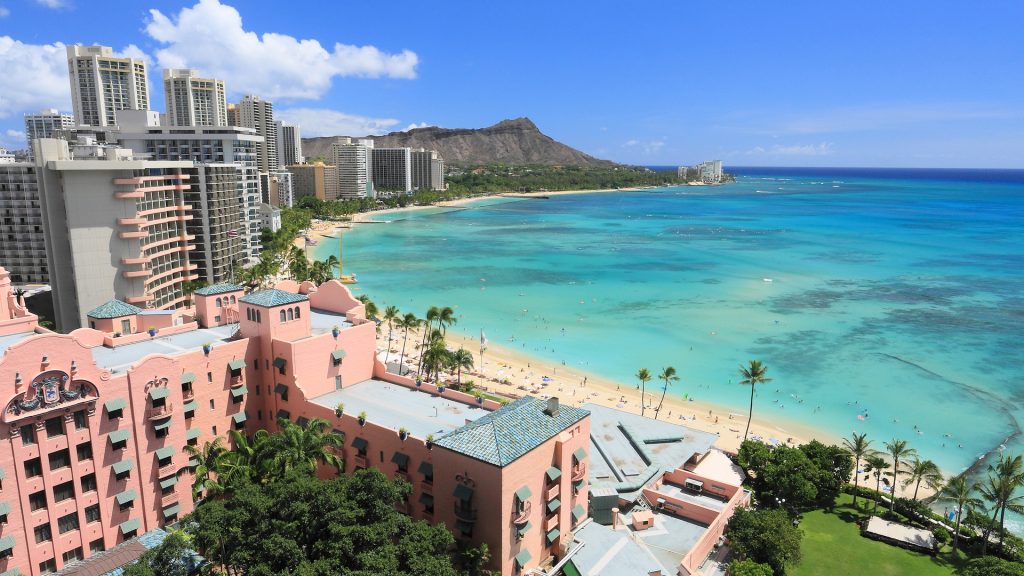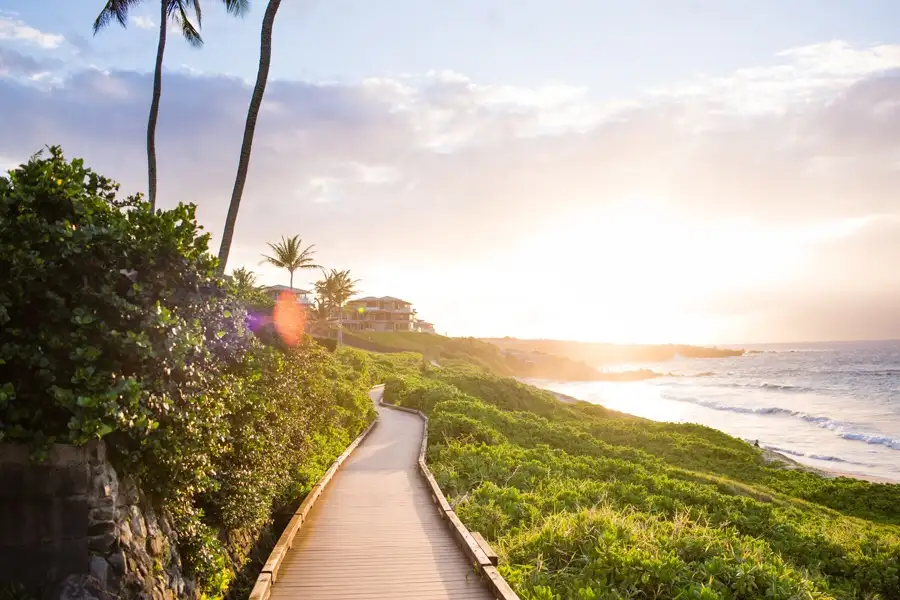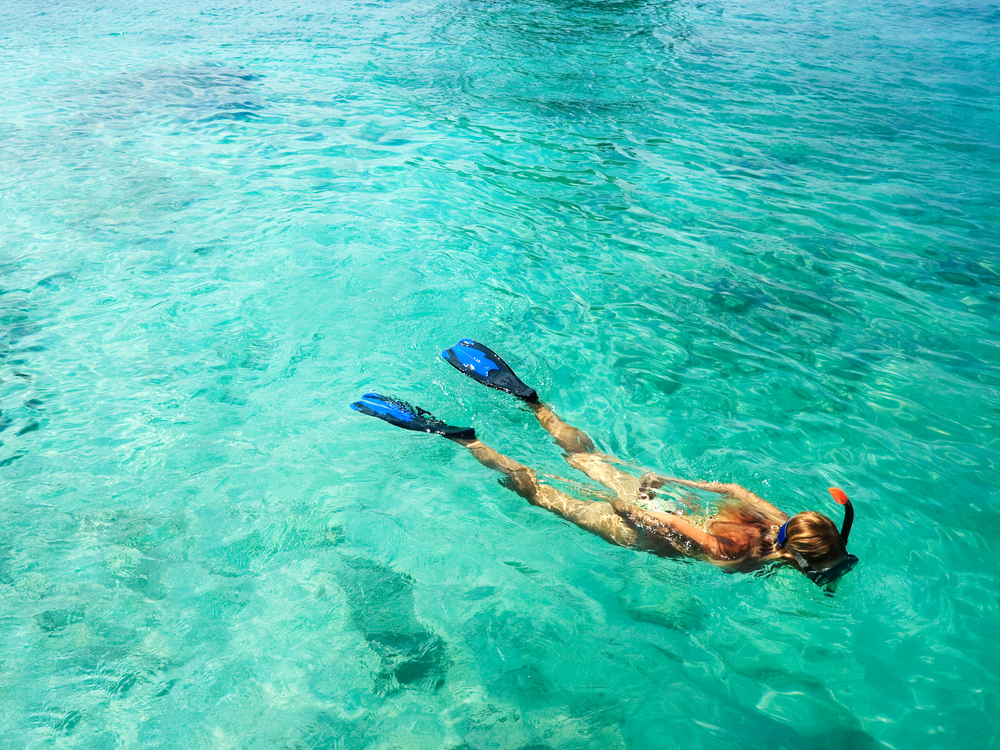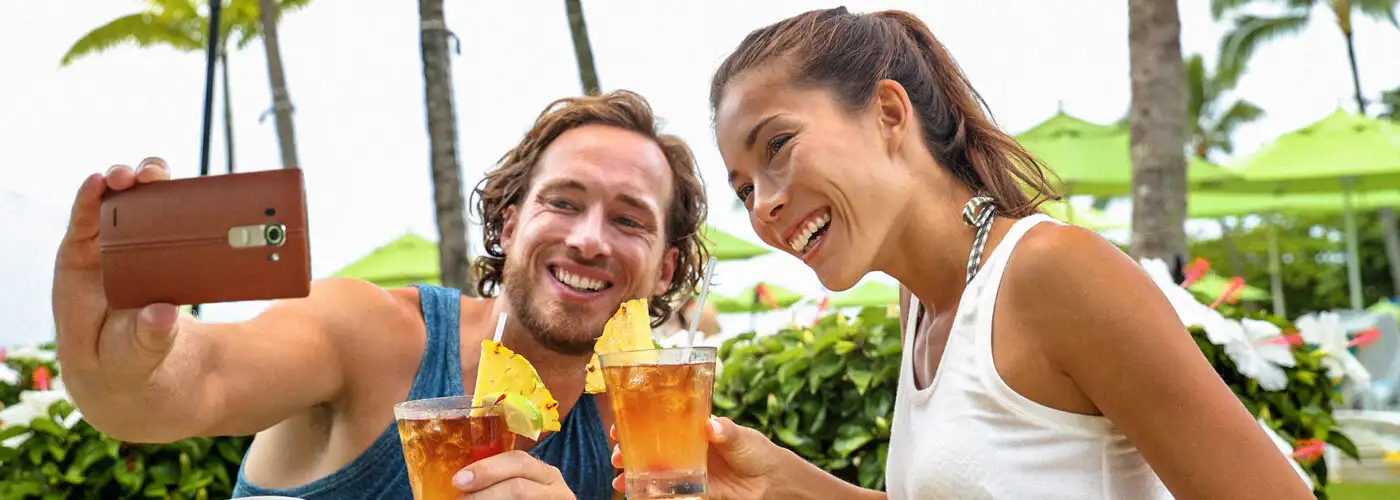There may not be one single best way to vacation in Hawaii, but there are plenty of ways to do it wrong. To have a great trip to the Aloha State, avoid these 12 pitfalls. Then again, if nothing says vacation like speeding tickets, painful stings, and bland food, by all means ignore this advice for what not to do in Hawaii.
Don’t Automatically Opt for a Beachside Hotel

When imagining a perfect Hawaii vacation, many people envision a beachfront hotel with an ocean view. But staying off the beach has its advantages, too. First, you’re likely paying a lot less than you’d pay for an ocean view. High five. And second, you’re not going to get stuck in a beach rut.
Have I mentioned all beaches in Hawaii are public? That means that any hotel’s beach is, essentially, your beach as well.
If you don’t have a default, roll-out-of-bed-and-onto-the-sand option, you’re far more likely to push yourself to find those incredible off-the-beaten-path spots that make a Hawaiian vacation truly memorable. And if you’re not holed up in a resort compound, you’ll also likely eat better food and see more of the island. That’s win-win, in my book.
Don’t Forget About Resort Alternatives
There may not be quite as many lodging options as there are grains of sand in Hawaii, but it’s close. With their waterslides and swim-up bars, hotel resorts get most of the attention; however, if you’re looking for great overall value, you’d be wise to consider other options as well.
Like hotels, vacation rentals span the spectrum between affordable and upscale—and they will get you kitchens, living spaces, and often nice extras like grills and washer/dryers, too. Vacation club resorts offer a mix of more space and hotel-like amenities.
Hawaii recently made it onto a list of BedandBreakfast.com’s fastest-growing destinations for B&Bs, and farmstays are increasingly popular as well. Hostels, which sometimes have private apartments and other unexpected extras, should be on the radar of budget travelers who want a beach-friendly location.
Don’t Skip the Car Rental
Unless you really are totally committed to relaxing at your resort and doing nothing more than lounging by the pool, sleeping at the beach, swimming, and eating (not a bad proposition, it’s true), then you need to rent a car.
Hawaii delivers serious splendor beyond resort walls, and you’re going to need a car to visit many of these incredible spots. Hidden beaches, volcanic peaks, wild valleys, and thundering waterfalls beckon from the end of long highways and down bumpy roads, accessible only to those willing to drive (and sometimes hike) for a peek.
Keep in mind that many car rental companies in Hawaii restrict where you can and can’t bring non-four-wheel-drive rental cars. If you’re planning on venturing down unpaved roads, compare policies by rental agency and car type. And if you’re planning to rent a car under age 25, there are other considerations as well.
Don’t Assume You’ll Speed Through the Car Rental Pickup
You land in Hawaii after a long flight primed to start your vacation. You grab your checked bags and head to the street to grab the car rental shuttle. And that’s when you realize everyone else on your flight (and on every flight that landed around the same time) is headed to one of a few car rental agencies at the airport, too. And then you wait. And wait.
Patience is key, but there are certain steps you can take to expedite the process. Join the rental agency’s loyalty program before you go; that will likely entitle you to stand in a shorter line or skip the line altogether and head straight to your car.
And whatever you do, don’t make anything complicated. On a recent trip, I tried out third-party car rental insurance and wanted to add my spouse to the contract. Thirty minutes later we were still discussing the finer points of car rental policies with the branch supervisor. Never again. Remember: Patience, preparation, simplicity. Repeat this mantra as needed while standing in line.
Don’t Eat Out All the Time

What happens when you take a loaf of bread (or simply the flour to make the bread) and ship it 2,000 miles? The person who eventually eats the bread pays a long-distance markup. There’s no getting around it—eating out in Hawaii is expensive. It’s not just fancy spots, either; local spots (and even the grocery store, frankly) seem pricier than their mainland counterparts.
Even if you feel like it’s just not vacation unless you’re dining out regularly (I am familiar with the phenomenon, being married to a person with this affliction), you can still save hundreds of questionably spent dollars by insourcing some of your meals. Breakfast is an easy one: Head to the local market, pick up some cereal and milk, and occupy the mini-fridge.
If you’re a bit more ambitious, keep sandwich fixings and snacks on hand and make some of your own lunches. After all, a picnic lunch pairs perfectly with a day at the beach.
Don’t Underestimate Hawaiian Food
I’ll admit I was guilty of this. I don’t like Spam and I’m not a huge fan of finding surprise pineapple in my food. But there’s so much more to Hawaiian food than potted meat and hidden tropical fruit. Over the last decade, Hawaii has done its local bounty proud, finding new and better ways to showcase the incredible interplay of agricultural abundance and rich cultural influences.
How do you unlock the culinary delights of the Hawaiian Islands? By getting out there with an appetite. Hit up a farmers’ market on any island for a taste of what’s freshest. Try some local vodka made with sugar cane and deep-ocean mineral water. Stop at a roadside shack for smoothies. Explore a coffee plantation, then enjoy a fresh cup of the local brew. Stand in line at a food truck for shave ice. Feast on furikake chicken at a local joint, and eat every malasada (a Hawaiian-Portuguese donut) and manju (a bun filled with coconut, sweet potato, and other delights) that dares to cross your path. Try a plate lunch, saimin, poke, and other local specialties you find.
And bring an extra suitcase to fill with local candies and cookies from local candy producers such as Big Island Candies on the Big Island and Nisshodo Mochiya on Oahu.
Don’t Skimp on Sunscreen
When my dermatologist found basal-cell carcinoma on my face a few years ago, I was surprised. I had a few bad sunburns when I was young, but for decades I’ve been dutifully applying sunscreen and wearing hats. But she said that most people (including me) weren’t applying adequate sunscreen, and weren’t reapplying often enough.
If a thick initial application and top-ups every 90 minutes in the sun seem like a vacation buzzkill, try reframing it this way: You’re on vacation. That means you’re not spending days replying to work emails (if you are, we need to have another conversation), running errands, reorganizing the kitchen cupboards, or commuting. Most of your time is dedicated to fun and relaxation. So consider this the one thing on your to-do list.
And come on, if “apply sunscreen” is the main thing on your to-do list, you are winning at life.
Don’t Stick to the Same Beach

All beaches in Hawaii are public. Even if they’re at a fancy resort, or surrounded by a gated community, or bordered by private property, beaches must be accessible and open to anyone. And each of Hawaii’s beaches offers a slightly different twist on paradise: calm lava pools and lolling sea turtles, stunning black sand, vivid blue water, wide resort beaches dotted with chaise lounges, and everything in between. No beach is quite the same, which means you’ve got your work cut out for you if you’re harboring beach-expert aspirations.
Don’t Forget There’s More to Hawaii Than Beaches
Yes, Hawaii is best known for its beaches. Yes, people come from all over the world to bask on its shores. But a trip that ends at the beach misses out on the rich culture and diverse natural beauty of the islands. Learn about Hawaii’s complicated history and strong cultural identity at historical sites and cultural centers. Explore its natural beauty at botanical gardens and along hiking or biking trails. Enjoy the rhythms of local life in its small towns. Your curiosity will be rewarded.
Don’t Rent Snorkels in Hawaii

Let’s talk about snorkel rentals. Yes, of course they’re cleaning them, but snorkels go inside your mouth. Would you share a partially eaten Lifesaver with a stranger? What if I cleaned it really well first? See what I’m getting at here?
All the germs aside, there’s the issue of cost. If you just want to rent a snorkel for an hour or two to check out some cool turtles, or stingrays, or brightly colored fish, then it might be cost-efficient. But let’s face it, snorkeling in Hawaii is pretty addictive, and after you’ve done it once you’re probably going to feel like swimming without snorkel gear is like going to an amazing museum with a blindfold. You’ll still be in the museum, sure, but you’re not going to truly enjoy what makes it beautiful.
So what do you do instead? Head to a larger town and find a Costco, Target, or other big box store. In a pinch, you can even head to a well-stocked grocery store. There, you’ll find snorkel gear starting from about $20 for the mask-snorkel combo. Alternatively, you can bring your own from home.
Don’t Speed
While stuck in a marathon-based traffic jam on the Big Island, I noticed regular cars equipped with flashing lights cruising along the shoulder, bypassing the gridlock. At the time, my husband and I half-joked that some savvy locals had bought stick-on sirens (the marathon creates long lines of stopped traffic every year), but I soon discovered that these totally normal-looking, nary-a-Crown-Vic-in-sight cars make up a significant part of the police fleet on Oahu and the Big Island. Since officers can opt to use their own cars for work, any car can be a cop car. And that means drivers can’t fall back on the keeping-an-eye-out-for-cop-cars approach to pushing the speed limit. So stick to the speed limit and enjoy the scenery.
Don’t Dismiss Warning Signs
Strong current. Sharp coral. Stinging jellyfish. Wastewater bacteria. You’ll find signs covering these dangers and others at beaches around Hawaii. And let’s put it this way: They’re not just for show. The sand may be soft and the water warm, but these and other beach dangers are real and can be life-threatening.
So on your way from parking lot to beach, take a minute to read the signs so that you know what to look out for. And if what you read makes you think twice about entering the water, consider another beach. That, after all, is one of the great things about Hawaii—there are always more beaches to try out.
More from SmarterTravel:
Christine Sarkis does not rent snorkels. Follow her on Twitter @ChristineSarkis for more advice about making every vacation the best vacation.
Editor’s Note: This story was first written in 2015. It has been updated to reflect the most current information.
We hand-pick everything we recommend and select items through testing and reviews. Some products are sent to us free of charge with no incentive to offer a favorable review. We offer our unbiased opinions and do not accept compensation to review products. All items are in stock and prices are accurate at the time of publication. If you buy something through our links, we may earn a commission.
Related
Top Fares From
Today's Top Travel Deals
Brought to you by ShermansTravel
France: 8-Night Paris, Avignon & Nice...
Infinity Worldwide Vacations
 vacation
$2880+
vacation
$2880+
Poconos: 3 Nts in Garden of...
ResortsAndLodges.com
 hotel
$305+
hotel
$305+
7-Nt Canada & New England Cruise,...
Princess Cruises
 cruise
$839+
cruise
$839+




